Graffiti in Athens

Graffiti in Athens
Beautifully restored neoclassic houses from the late 19th Century usually have a few days or weeks before they are tagged with graffiti that owners find themselves unable to protect themselves from.
Although, any available surface, such as train wagons and even doors, will do to serve as canvases for upcoming urban artists.
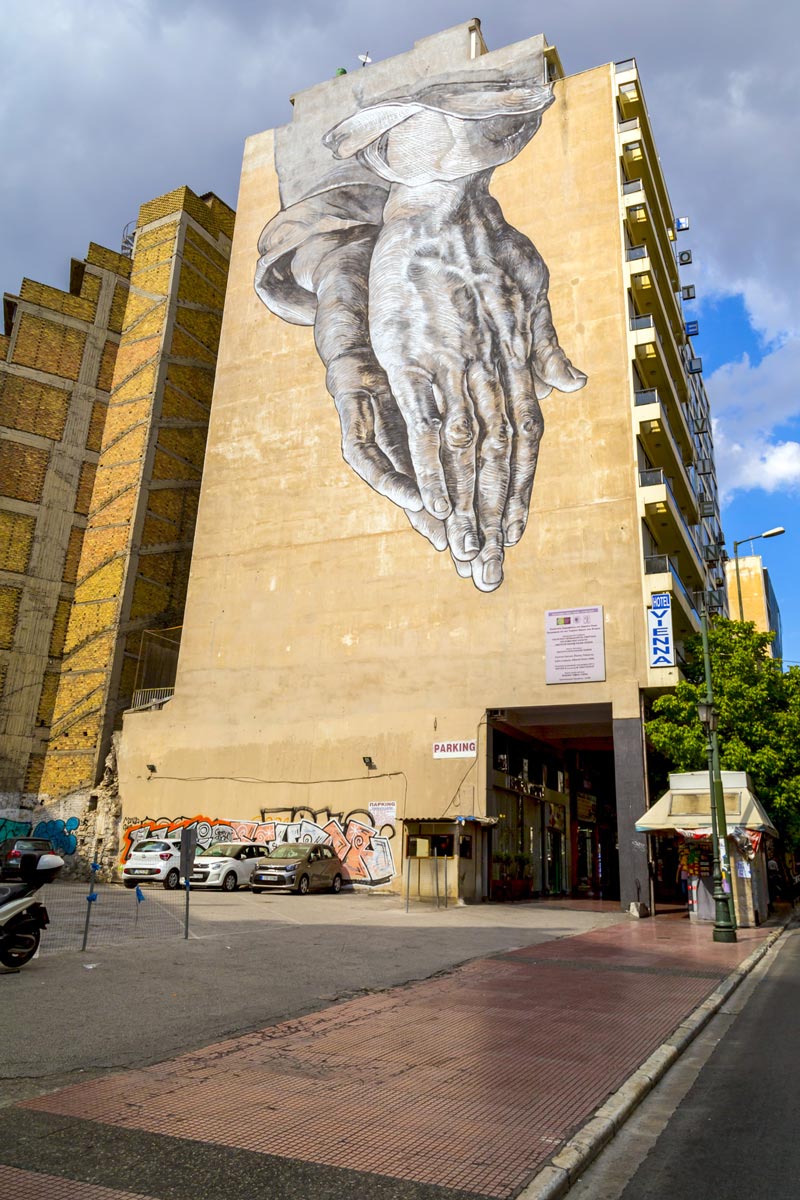


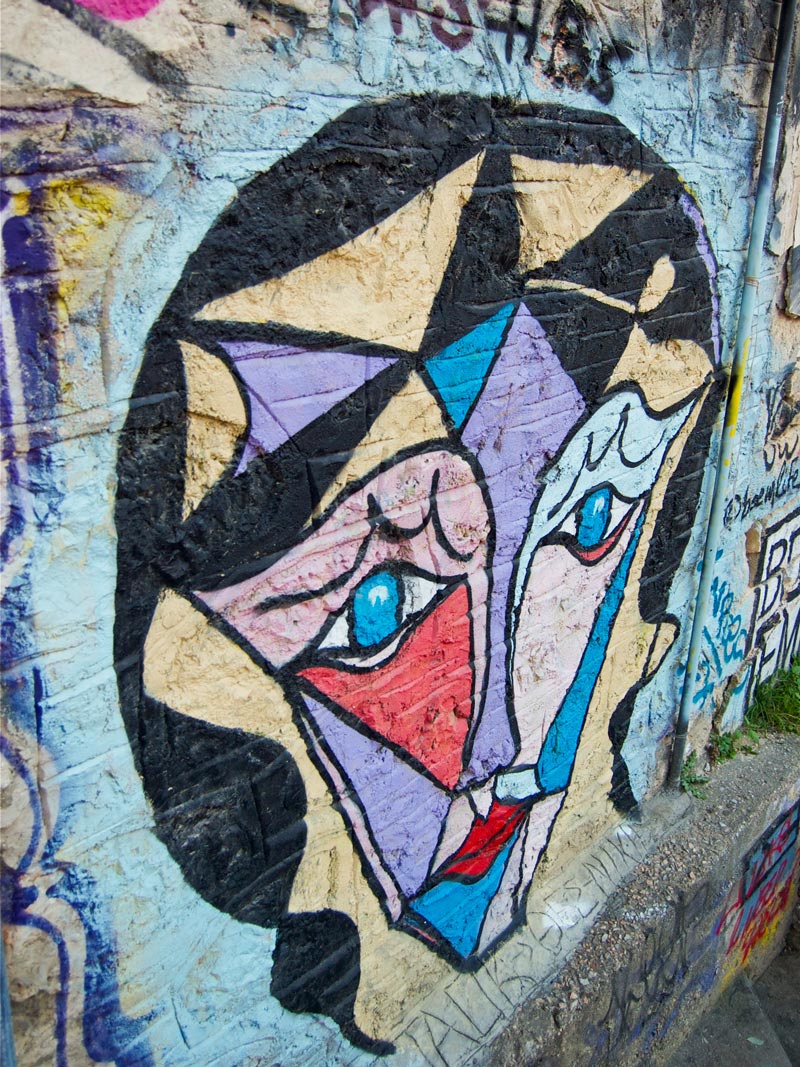
The preconception that graffiti began in Athens in the 1980s is not true. In fact, it is as old as the city itself.
In ancient epochs, graffiti was carved into buildings. The word is actually derived from the Greek "graphi" (def. "to write"). Interestingly enough, during the Nazi occupation, the Civil War, and the 1967 Junta, political graffiti was common in Athens and served a purpose.
At present day, it is more of an outlet for youth to get their messages out through signatures and slogans – which is why many seem to think this is more of a modern phenomenon. Make no mistake, there is a great amount that can and must be considered art and is easy to spot on the streets of Athens.

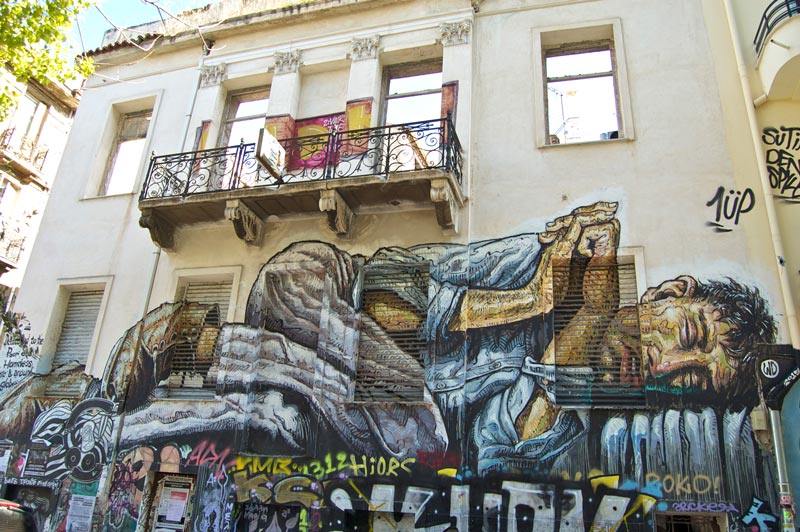
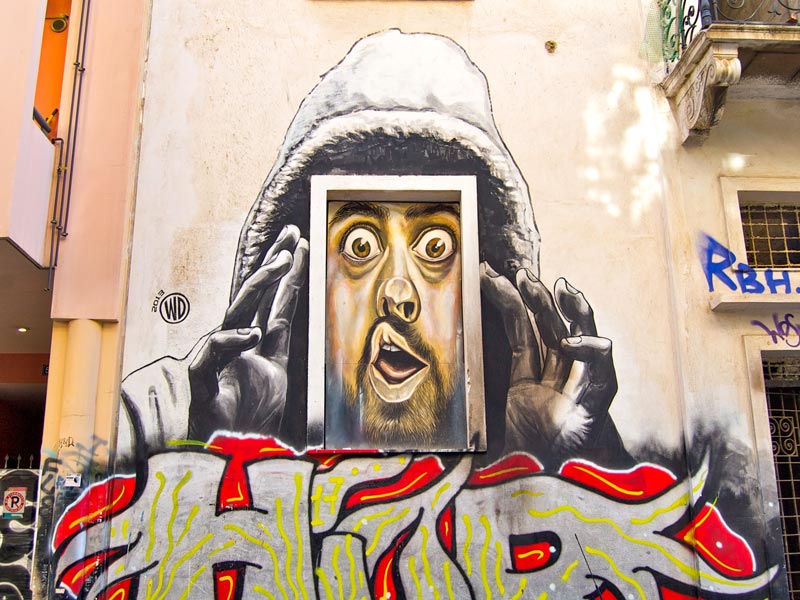
Most notable is on the H.L.P.A.P. Building where the pedestrianized section of Ermou Street meets Pireos at the start of the Gazi area. This is the building that houses the city trolley buses and the graffiti was painted by a group of well-known international artists. It has not been kept up and could use some restoration but is impressive for its size, design, and colors.
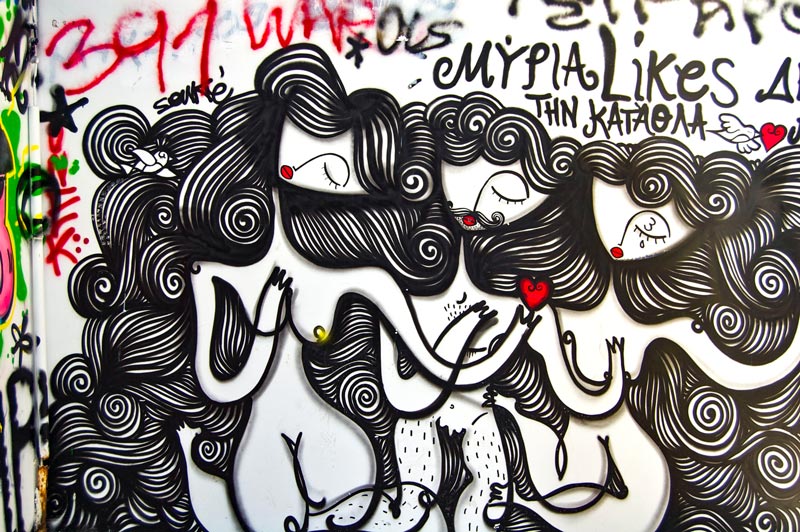
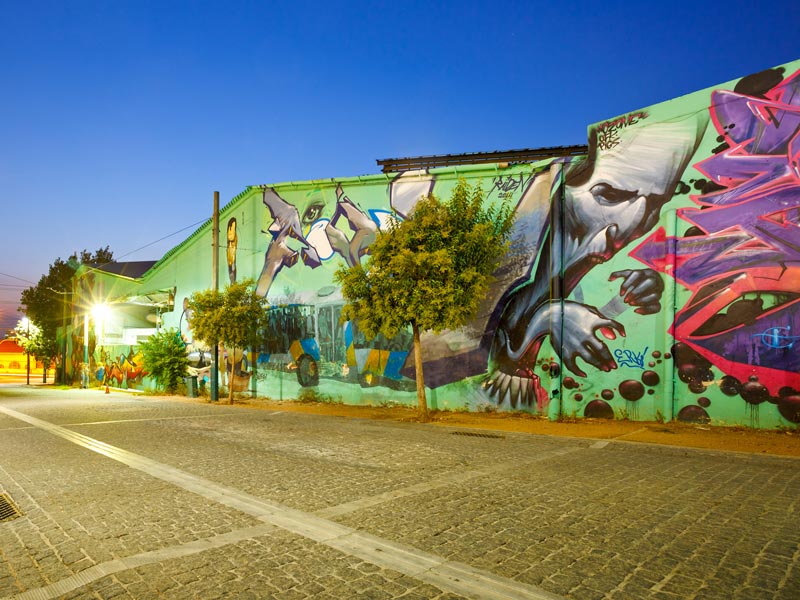
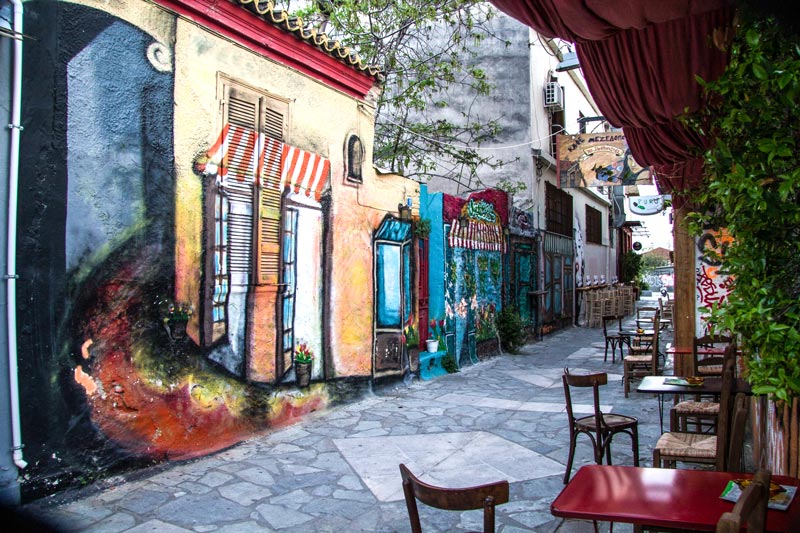
Other areas popular with graffiti artists are the Plaka, Gazi / Kerameikos, Psiri, and Exarcheia districts - as well as along the lines of the Pireaus metro.







